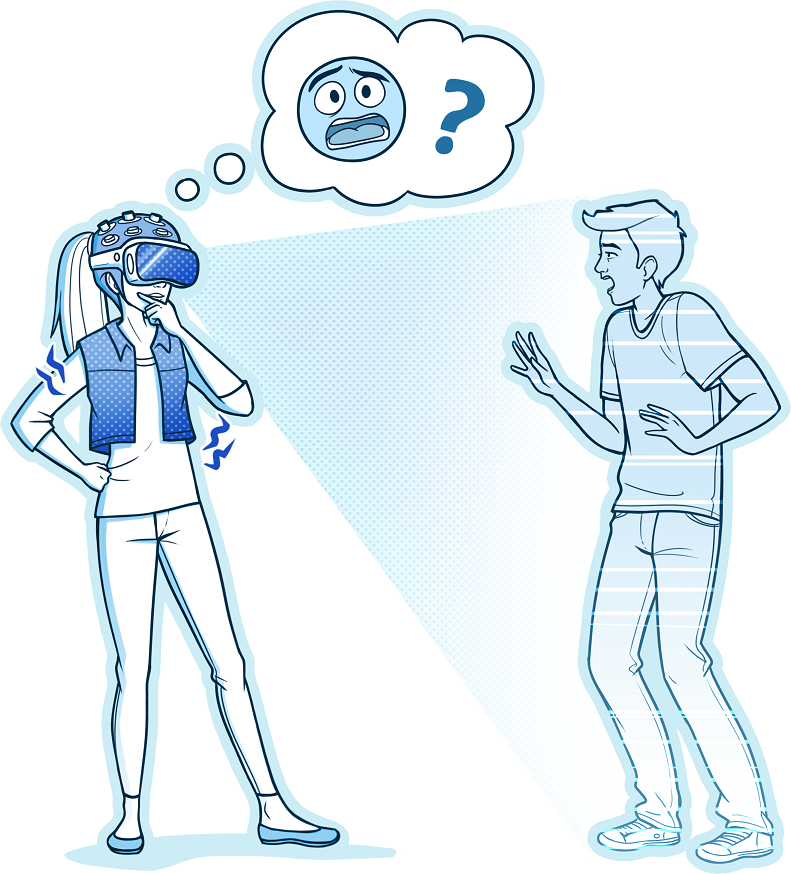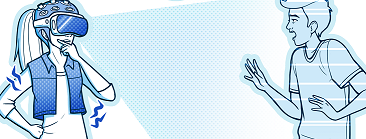 As early as the beginning of 2020, the two managing directors of Sensovo put their heads together and discussed whether the UFO project was feasible for the Sensovo team. A UFO? What does that even mean?
As early as the beginning of 2020, the two managing directors of Sensovo put their heads together and discussed whether the UFO project was feasible for the Sensovo team. A UFO? What does that even mean?
No, this is not about little green aliens, although the complex description of the project might suggest. 🙂 Wanna know more?
The project involved submitting a project outline to the research project announced by the ‘Federal Ministry of Education and Research’ (german BMBF for short):
Interactive Systems in Virtual and Real Spaces – Innovative Technologies for the Digital Society
https://www.interaktive-technologien.de/foerderung/bekanntmachungen
The purpose of the call is to support innovative research and development projects in human-technology interaction that complement mixed reality (MR) technologies, including virtual reality (VR) and augmented reality (AR), with physical interaction capabilities.
The Ministry wishes creating “togetherness through innovation”, as it says on the website. And for this ‘togetherness’, a consortium team needs to wrork together to take on this challenge. The submission of the project outline covers a very long time frame and also a large financial scope, so that many preconditions had to be clarified for us Sensovianis at first. But with the ‘preconditions’ ticked off, we went to work on the project idea, which has the following “sonorous” name:
Using neUrophysiological interFaces and tactile assisted virtual reality to promote work-related inclusiOn – UFO for short.
All right? Not? 🙂 Yep, we also had a bit of a hard time with it at the beginning. But perhaps a little story that addresses the core of the problem:
Jenny (35) is an employee at a job centre. She is responsible for the inclusion of people with autism in the job market. For her, these autistic people are weird people. Most of them are very intelligent, some have even skipped school classes. But dealing with them is very difficult. She often finds them rude: they don’t look her in the eye when talking to her, they don’t laugh with her when she wants to cheer up the situation with a funny remark, and they answer very timidly. When she does arrange an interview, it is often unsuccessful. Why all this is the case, she does not understand.
A project outline with the goal “Together through Innovation”
The common goal in the consortium was to outline an innovative, technology-supported training programme that supports preventive communication and cooperation between socially different characters. It is intended to eliminate prejudices or lack of understanding about reactions in the work cooperation. There are people with special needs (e.g. people in the autism spectrum or with attention deficit syndrome) who, on the one hand, enrich cooperation in everyday work with their diverse perspectives and strengths, but on the other hand, can be difficult when it comes to social interactions. These difficulties exit despite often high cognitive abilities, as can be read in the case study above.
How can cooperation still work? How can understanding be built up for a counterpart without knowing what the person thinks and how he or she feels? And this is exactly where we come in with our consortium team.
The ‘University of Stuttgart’ will design virtual environments (VR) together with ‘Fraunhofer Stuttgart’. They are supported by ‘auticon’, an IT company exclusively with consultants from the autism spectrum. The two characters with their different social characteristics will now enter the very stimulating VR environments. During the VR experiences, brain waves are recorded with the help of the brain-computer interface developed by ‘NIRx’ using new infrared technology. One of the major research topics describes the difficulty of reading concrete emotions from very specific brain signals. With our AI-supported solution, the emotional states become visible aa perceptible and can be predicted. For this purpose, the states are broken down into patterns and transferred to the skin in the form of vibrations with the actuators designed by ‘Sensovo’. Emotional states are thus transformed into tangible sensory perceptions. Ingenious, isn’t it? The emotions are made ‘tangible’ through a tactile output and allow to understand the sensitivities of the other person.
From idea to paper – a proposal with consequences
 The consortium also made an effort to summarize this idea into a project paper and submitted it t BMBF. Everyone in the consortium was aware that the sketch was only the tip of the iceberg. If the submission was successful, a detailed overall project description had to be produced – as well as the various sub-descriptions of the individual partners.
The consortium also made an effort to summarize this idea into a project paper and submitted it t BMBF. Everyone in the consortium was aware that the sketch was only the tip of the iceberg. If the submission was successful, a detailed overall project description had to be produced – as well as the various sub-descriptions of the individual partners.
So the UFO went on its way – with a proposal to connecting “people through technology”, but also the BMBF reviewers. Among hundreds of submissions, we were able to land our “UFO” proposal and got one of the few available funding spots for the programme called “Interactive Systems in Virtual and Real Spaces”.
The Sensovo team is proud to have contributed to this partial success with its know-how and expertise in tactile technologies, medical haptics and project management.
But the UFO journey continues. So don’t miss the next episode, which will show how the UFO flies directly to the TITAN moon, orbits it and continues to focus on its goal of “bringing people together”.
